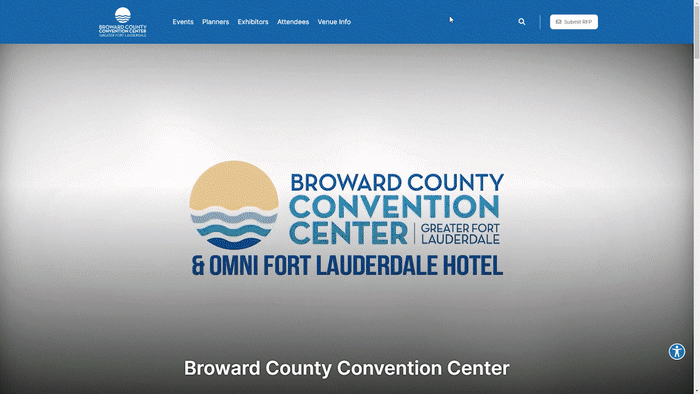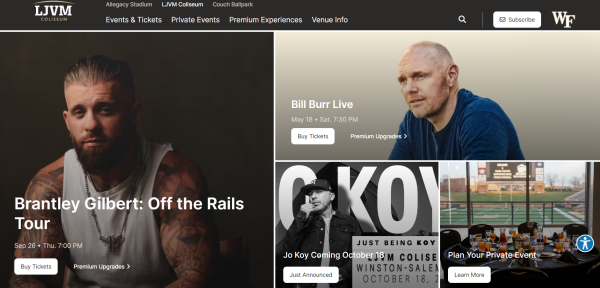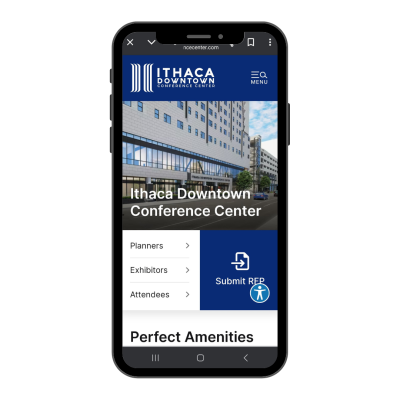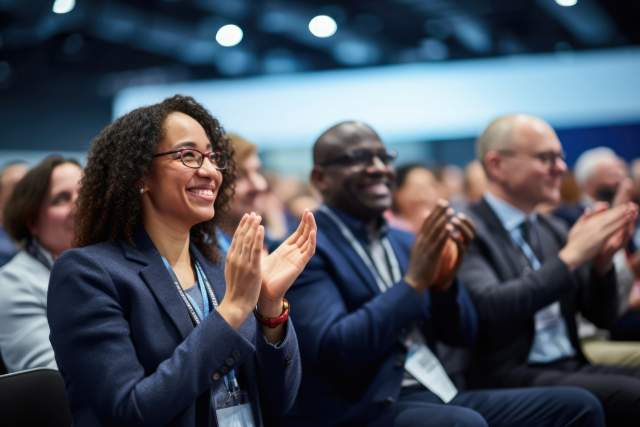We live in an age of digital dominance. And for event venues, their audiences’ first step is into the digital front door — your website.
Successful conference venue websites aren't just digital brochures, they're strategic assets that speak directly to event planners and attendees to drive more business. So when you’re evaluating if your website is a capable tool in your venue’s strategy, there’s a lot to think about ... especially when you consider that 88% of website visitors won’t return after a bad experience (Sweor).
A winning formula blends three key ingredients: strategy, design, and functionality.
After working alongside venues for 20+ years, we’ve built a list of battle-tested elements proven to drive success. Here are six essential elements you need for building a conference venue website that drives business.
1. Goal-Oriented
Let’s get right into it. Your website needs to bring business to your venue. So you have to build it around that singular focus. Increased requests for proposal (RFP) submissions, ticket sales, premium upgrades, and event bookings — your key performance indicator (KPI) should be the guiding light.
But users are increasingly impatient, leaving you with limited time to make maximum impact. Users only spend 6.44 seconds looking at a website’s main navigation (CXL). And 61% say they leave if they don’t find what they’re looking for within five seconds (Forbes).
That’s a fine line to walk.
So how can you give them what they want quickly and efficiently?
It’s all about clarity.
-
Clear navigation that guides users to action
-
Clear calls to action (CTAs)
-
Clear details and information
-
Clear showcase of your space

A screenshot from the Broward County Convention Center website
Here’s how that plays out.
For planners:
Planners want to cut through the fluff and get right to the vital information. You should intuitively guide event planners through the process of hosting their event. That means clean and accurate information about available spaces, capacity, and amenities. Virtual tours and interactive floor plans give planners a clear vision of their event in action. Each piece moves them closer to your goal of filling your space.
For attendees:
Quickly and clearly showcasing your upcoming events is the best way to inspire action from attendees. Give attendees an interactive calendar packed with descriptions and clear calls to action, information about nearby transportation and accommodation options to simplify their planning process, and engaging imagery that stands out instead of getting lost in clutter.
2. Optimize for CTAs
Speaking of CTAs, they’re the sparks that ignite your goals. A venue’s website can be a powerhouse for driving business through the strategic use of CTAs. Here’s how to optimize your website to fuel conversions.
Focus on user intent: Craft CTAs that cater to the needs of each visitor. For event planners, a prominent "Request a Quote" button on the homepage gets them started. Landing pages for specific event spaces can feature CTAs like "Book Now" or "Schedule a Virtual Tour." Highlight a “Buy Tickets” button for attendees to purchase.
Clarity and urgency: Don't leave visitors guessing what to do next. Your CTAs should be clear, concise, and action-oriented. Avoid generic phrases like "Learn More." Instead, use action verbs like "Download Brochure," "Contact Us for Special Rates," or "Buy Now" to create a sense of urgency.
A/B testing and analytics: Don't settle for assumptions. A/B testing compares different CTAs, phrasing, and button placements. Analyze visitor behavior through tools like website heatmaps to see where users click and what catches their attention. This data allows you to optimize your CTAs for maximum conversion rates, turning website visitors into bookings.
Design for action: Don’t underrate the impact of design on conversion. Color strategies and good photography are more than just pretty accents. They guide your users to key CTAs. This not only maintains brand consistency but helps call attention to action items on the page.

A screenshot from the Lawrence Joel Veterans Memorial Coliseum website
3. Integrations
A seamless user experience is key to inspiring action. Even the strongest CTA strategy won’t make an impact if your website isn’t smoothly connected with the essential tools you need to do business. So your website has to include smooth integrations across the board. That means your link with ticketed event feeds is integral.. But it also means platforms like Threshold 360 that bring your space to life. Smooth integrations create a connected experience and streamlined path toward action.
4. Optimize for Mobile
Mobile-friendly websites are no longer a perk — they’re a necessity. More than 70% of conference venue web traffic starts on mobile devices. So scaling your content effectively is vital, but it’s not just making sure images and text scale correctly. It’s about strategic optimizations around performance and functionality. Here are a few key considerations to ensure peak performance for your mobile site:
Prioritize speed and simplicity: Mobile users have limited patience for slow loading times. In fact, 47% won’t even wait longer than two seconds for a website to load (Sweor). Ensure your website is lightweight and optimized for fast loading on any device. Simplify navigation with clear menus and large, easy-to-tap buttons.
Focus on visual appeal: High-quality photos and virtual tours are even more crucial on mobile screens. But be mindful of image size to avoid slow loading. Consider using a content delivery network (CDN) to ensure smooth image delivery.
Make contact easy: Include prominent click-to-contact buttons and clear contact information. Most importantly, ensure your website forms are easy to complete on a mobile device.

A screenshot of the mobile optimizations on the Ithaca Downtown Conference Center website
5. Accessibility
Nearly 1.3 billion people around the world live with a disability. A venue website needs to be able to accommodate their needs if it wants to reach its full potential. Yet only 3% of the internet is considered accessible (AudioEye). Your support should stretch across devices and screen sizes.
Here are a few things to consider from our friends at AudioEye:
-
73% of travel pages have an inaccessible image or graphic
-
54% of pages were missing frame titles
-
40% of travel pages with a form had at least one field that was not labeled
And don’t forget about accessible typography. It’s an essential piece of your website’s strategy that influences readability.
You can learn about website accessibility here.

A screenshot of the accessibility features available on the Tucson Convention Center website
6. Keep it Simple, Consistent, and Adaptable
Your website doesn’t have to be complex. It just has to be successful. And success is born from a few guiding principles:
Simplicity sells: You only have about 54 seconds to capture a user’s attention on any single page of your website (Content Square). Clutter will cost conversions. So your site’s layout and navigation must be clear and simple. High-quality visuals and concise text quickly communicate essential information that gives users what they need. And simple design builds in adaptability for long-term sustainability.
Consistency is key: From design to layout to styles, a consistent website creates a fluid user journey and exceptional experience. Creating familiarity intuitively guides visitors to relevant information and key moments of action.
Customization counts: Consistency allows for plenty of room for customization. Planners and attendees have diverse needs. Offer customizable elements to cater to these differences. Interactive floor plans with customizable filters allow event planners to visualize layouts specific to their event size and requirements. You can customize for attendees by personalizing event schedules or venue recommendations based on interests to enhance their experience.
Brand alignment is essential: You’re probably sick of hearing about consistency by now. But one more time to hammer the point home. Your website is an extension of your convention center's brand. Ensure the website's design, tone of voice, and imagery create a cohesive user experience that strengthens brand recognition.
Join 500+ travel organizations using Simpleview CMS.
Simpleview CMS fuels more successful travel organization websites than any other firm. Ready to get after your goals?
Get Started
